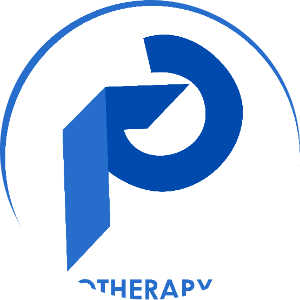
Causes of Left Shoulder Pain in Women You Must Know
Left Shoulder pain in women is becoming common causing discomfort and interfering with daily living. Left shoulder pain in women can be multifactorial, stemming from various underlying causes and pathophysiological mechanisms. In this detailed article, we'll explore the specific causes of left shoulder pain in women, accompanied by a comprehensive knowledge of the pathophysiology behind each condition, supported by medical literature and research findings.
Causes of Left Shoulder Pain in Women
Rotator Cuff Injury
Rotator Cuff injury are the common source of left shoulder pain in women, often resulting in overhead movements or activities that strain the shoulder and cause left shoulder blade pain in women.
Poor posture and repetitive typing or mouse movement can strain rotator cuff tendons over time for working women who spend long hours at desk or computer. Similarly, women engaged in a physical household like griding, holding the baby for long time, lifting, and overhead tasks.
Frozen Shoulder
Frozen Shoulder is characterized by inflammation and fibrosis of the shoulder joint capsule, leading to capsular contracture and restricted mobility Frozen shoulder causes left shoulder blade pain in women . While the exact cause remains unlear, it is believed that inflammatory cytokines and fibroblastic proliferation contribute to the development of adhesions and scar tissue within the joint capsule, resulting in pain and stiffness.
Busy Mom juggling household chores, childcare, and errands may find themselves inadvertently neglecting proper shoulder mobility exercise, Contact reaching, lifting and carrying heavy loads can exacerbate shoulder stiffness and contribute to the development of frozen shoulder over time and result in left shoulder pain women.
Muscle Spams
Muscle spams in the shoulder region can occur secondary to muscle fatigue, overuse, or underlying musculoskeletal disorder. Prolonged muscle contraction, often in response to pain or tissue leads to ischemia, metabolic waste buildup, and increased muscle tension, The cycle of pain and dysfunction, further exacerbates shoulder discomfort.
Whether its lifting groceries, wrangling children, or engaging in recreational activities women are often on the move. Overuse of shoulder muscle without adequate rest or stretching can lead to muscle fatigue and spasms, particularly among active individual who push their physical limits.
Shoulder Impingement Syndrome
Shoulder impingement syndrome involves mechanical compression of the rotator cuff tendon and subacromial bursa between the acromion and humeral head. This impingement leads to inflammation, swelling, and eventual tendon degeneration. Structural abnormalities such as acromial spurs or rotator cuff hypertrophy further exacerbate the impingement process.
Women with physically demanding jobs or hobbies, such as athletes, dancers or hairstylists may be at a higher risk of shoulder impingement syndrome due to repetitive arm movements and overhead actions. Additionally, an individual who carries bags or backpacks regularly may experience impingement symptoms from the added strain on their shoulders.
Sternocledomastoid Pain
Sternocleidomastoid pain, originating from the neck muscles, can refer pain to the shoulder region in women. According to a study in Pain Medicine, women with chronic neck pain often experience referred pain in the shoulder and upper extremities due to sensitization of the trigeminal cervical nucleus (Falla et al., 2017). Dysfunction of the sternocleidomastoid muscle, commonly observed in individuals with poor posture or cervical spine pathology, can exacerbate referred pain to the left shoulder area.
Lymph Node Pain
Lymph Node pain in the shoulder area can result from reative lymphadenopathy scenery to infections or inflammatory conditions that occur in response to antigen exposure. Inflammatory mediators related during the immune response contribute to lymph node tenderness and referred pain.
Women with busy lifestyles may experience lymph node pain in the shoulder area as a result of frequent exposure to environmental toxins, stress, or illness. Poor sleep habits, inadequate hydration, and unbalanced diets can compromise immune function, increasing susceptibility to lymphadenopathy and associated shoulder discomfort.
Breast Tenderness
Brest Tendress is commonly associated with hormonal fluctuations, particularly changes i estrogen and progesterone levels during the menstrual or pregnancy. Estrogen stimulates breast tissue proliferation and fluid retention, leading to increased breast volume and sensitivity,.Progesterone further exacerbates breast tenderness through ts effects on breast ductal dilation and fibrocystic changes.
everyday activities such as exercising, wearing ill-fitting bras, or performing manual breast examinations may further aggravate breast discomfort and contribute to shoulder symptoms.
Neck Stiffness
Referred neck stiffness can arise from cervical spine pathology, such as cervical spondylosis or disc herniation. Compression of spinal nerves or irritation of cervical facet joints leads to local inflammation and muscle spasm. Neurogenic inflammation and sensitization of nociceptive pathways contribute to the propagation of pain signals from the neck to the shoulder region (Slater et al., 2008).
Women who spend extended periods sitting at desks or driving may develop neck stiffness due to poor ergonomic setup or prolonged static postures. Additionally, stress and emotional tension can manifest as neck muscle tightness, exacerbating referred shoulder pain in individuals who carry their stress in their neck and shoulders.
Conclusion
Left shoulder pain in women encompasses a diverse array of causes, each with its own unique pathophysiological mechanisms. Understanding the underlying pathophysiology of these conditions is essential for accurate diagnosis and targeted treatment approaches.
In summary, the daily activities and lifestyle choices of women can significantly impact their risk of experiencing left shoulder pain. By recognizing the relationship between these activities and the pathophysiology of shoulder pain causes, women can take proactive steps to prevent injury, maintain shoulder health, and prioritize self-care in their busy lives.
Author :Dr. Khadija Fareed (DPT, MS Pain Management, PPTA)

Article by Physiotherapy Online
Published 30 May 2024